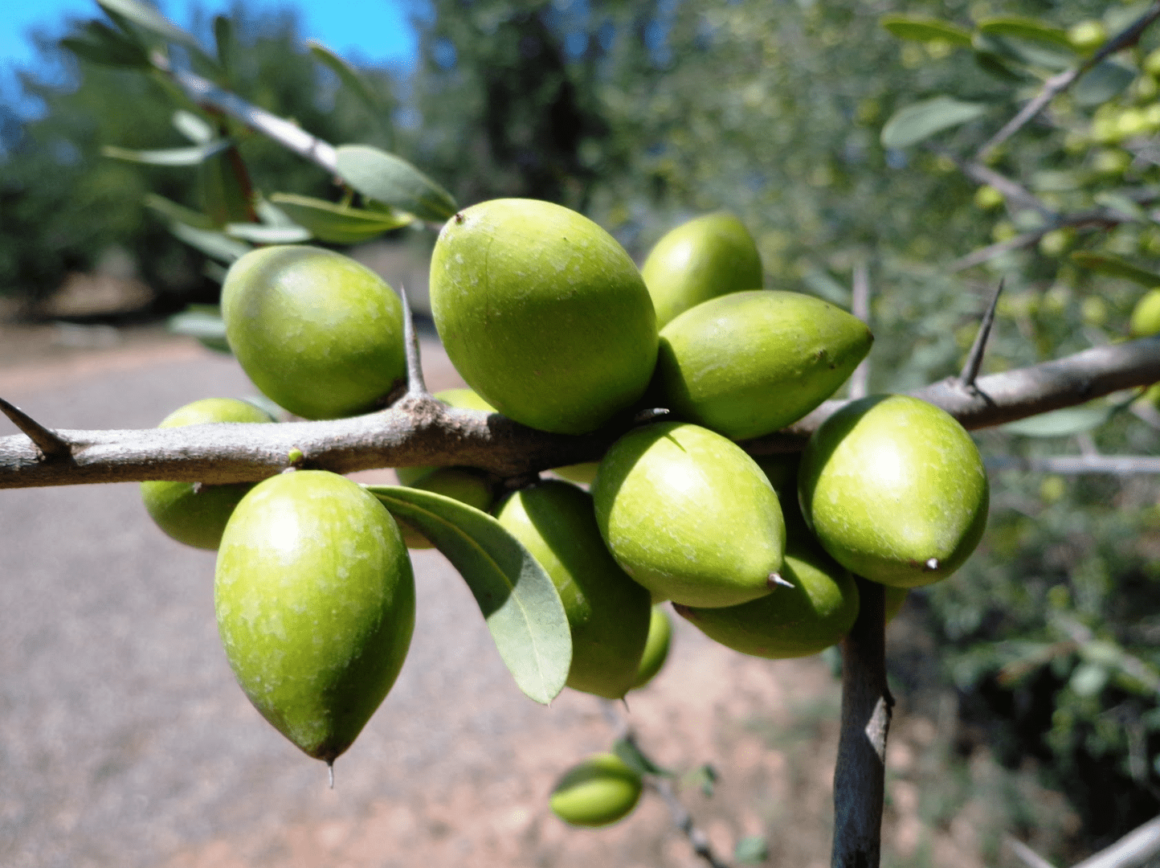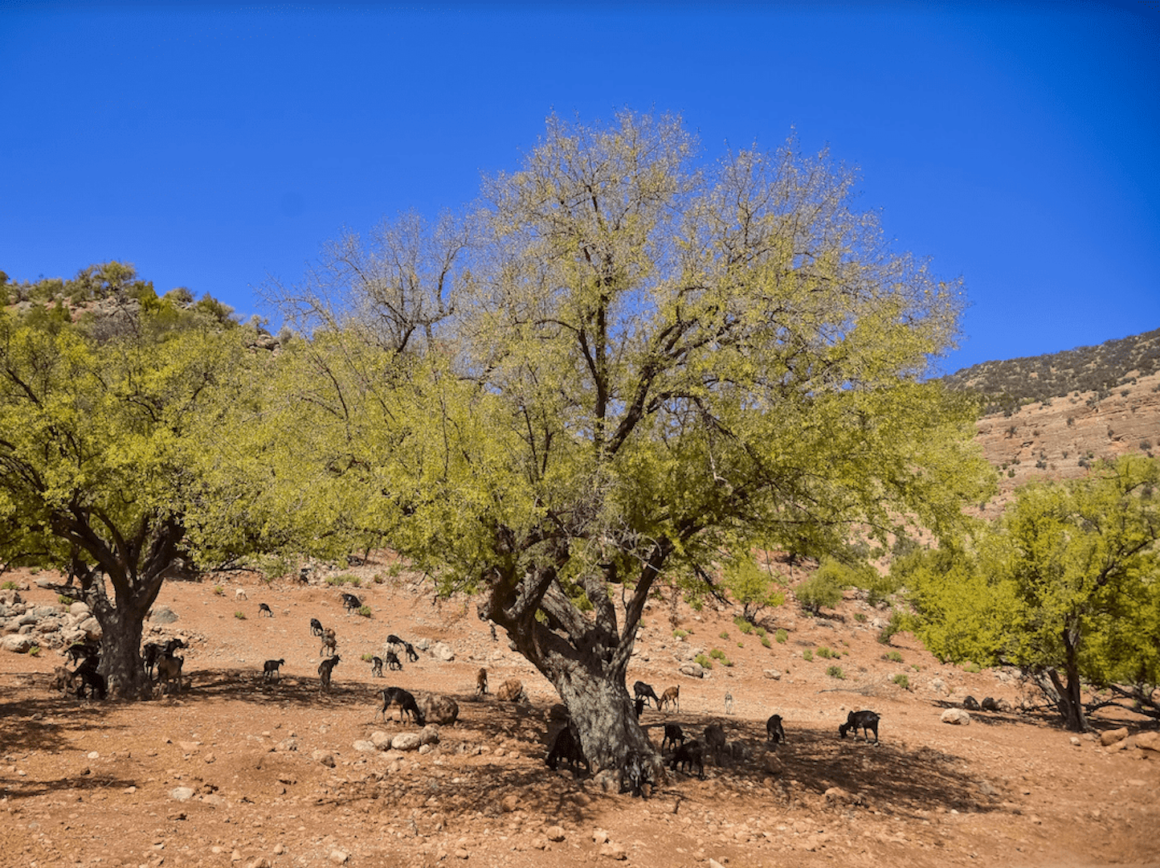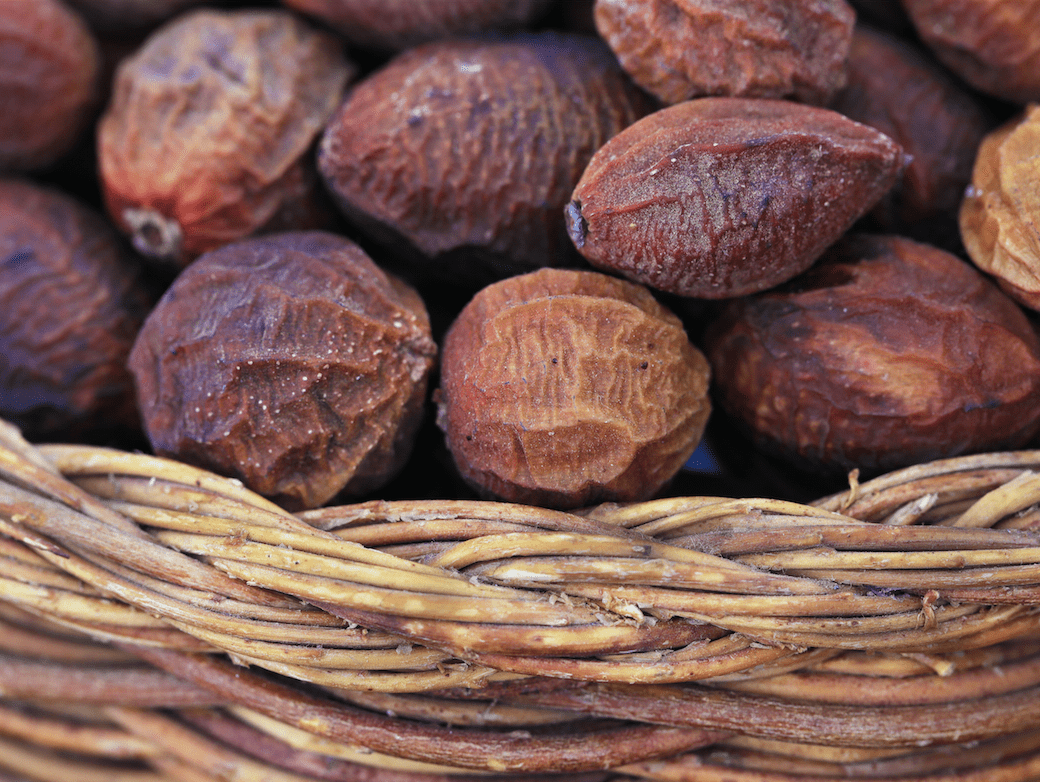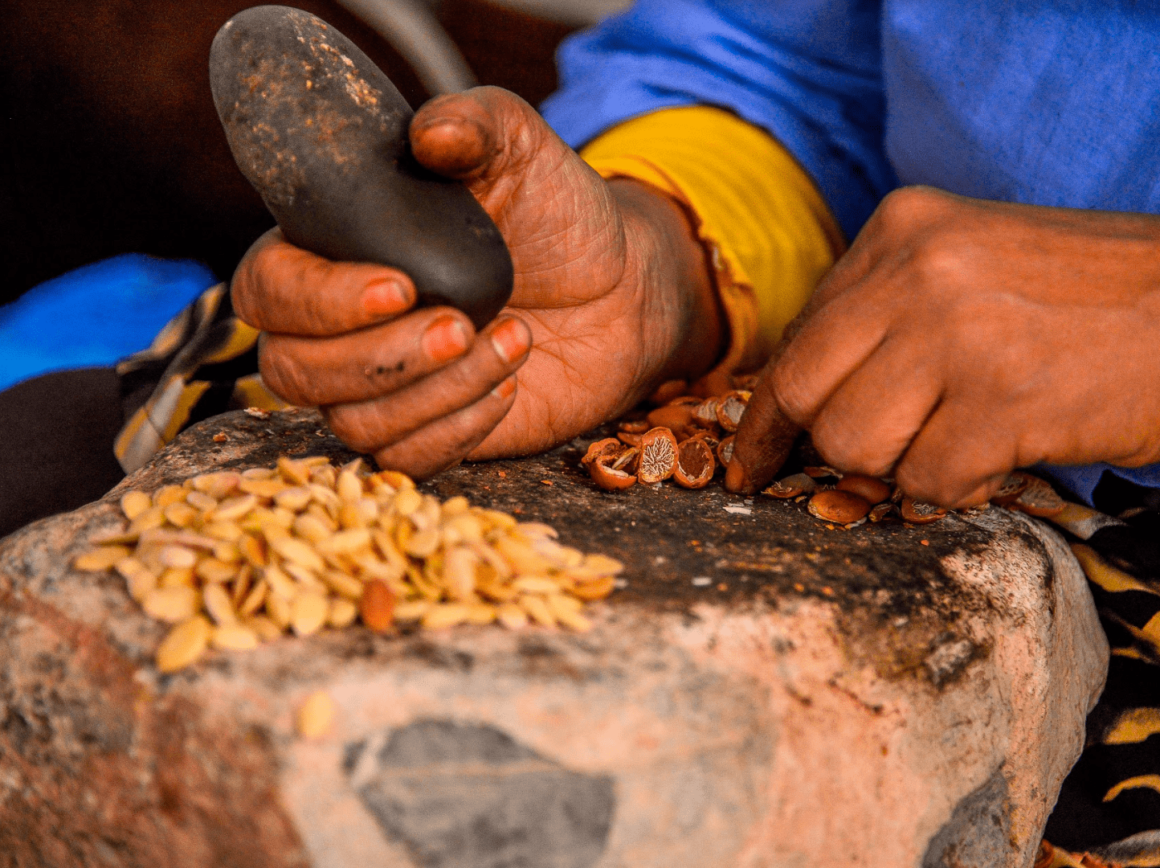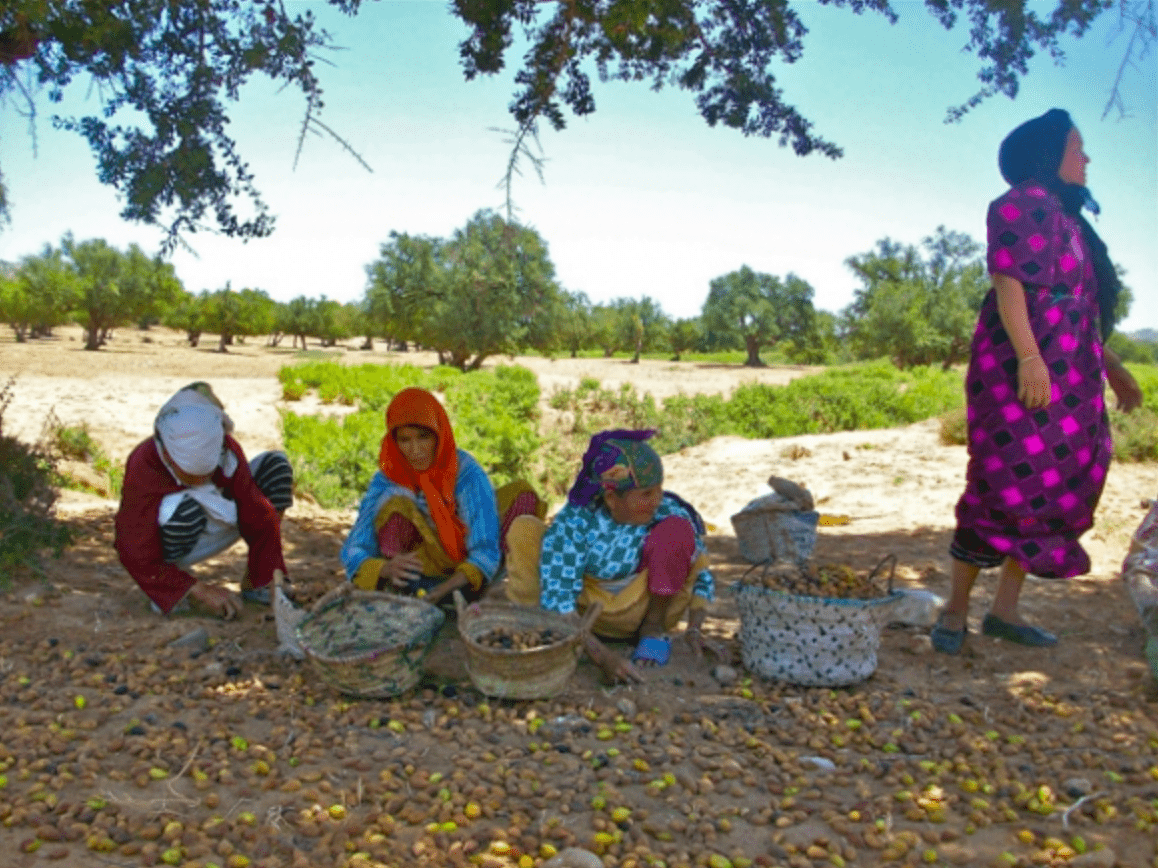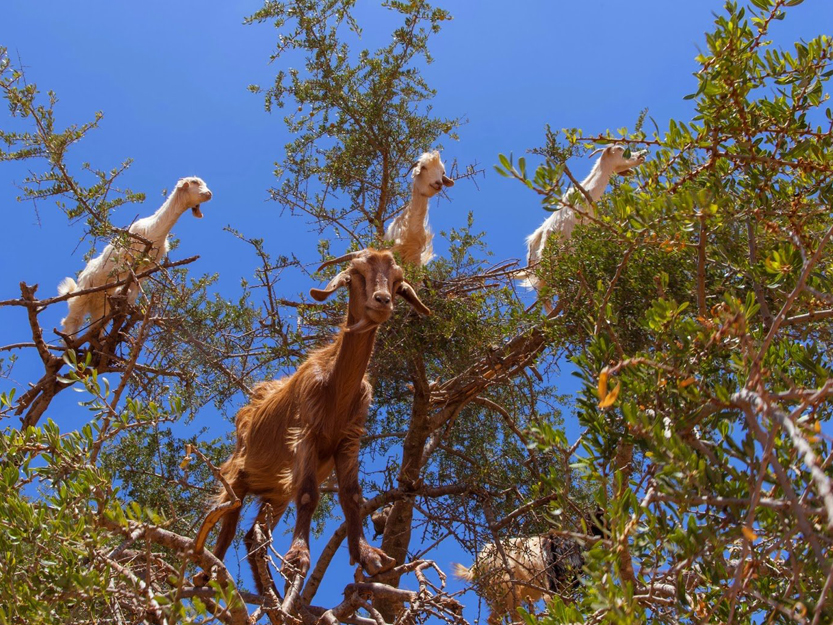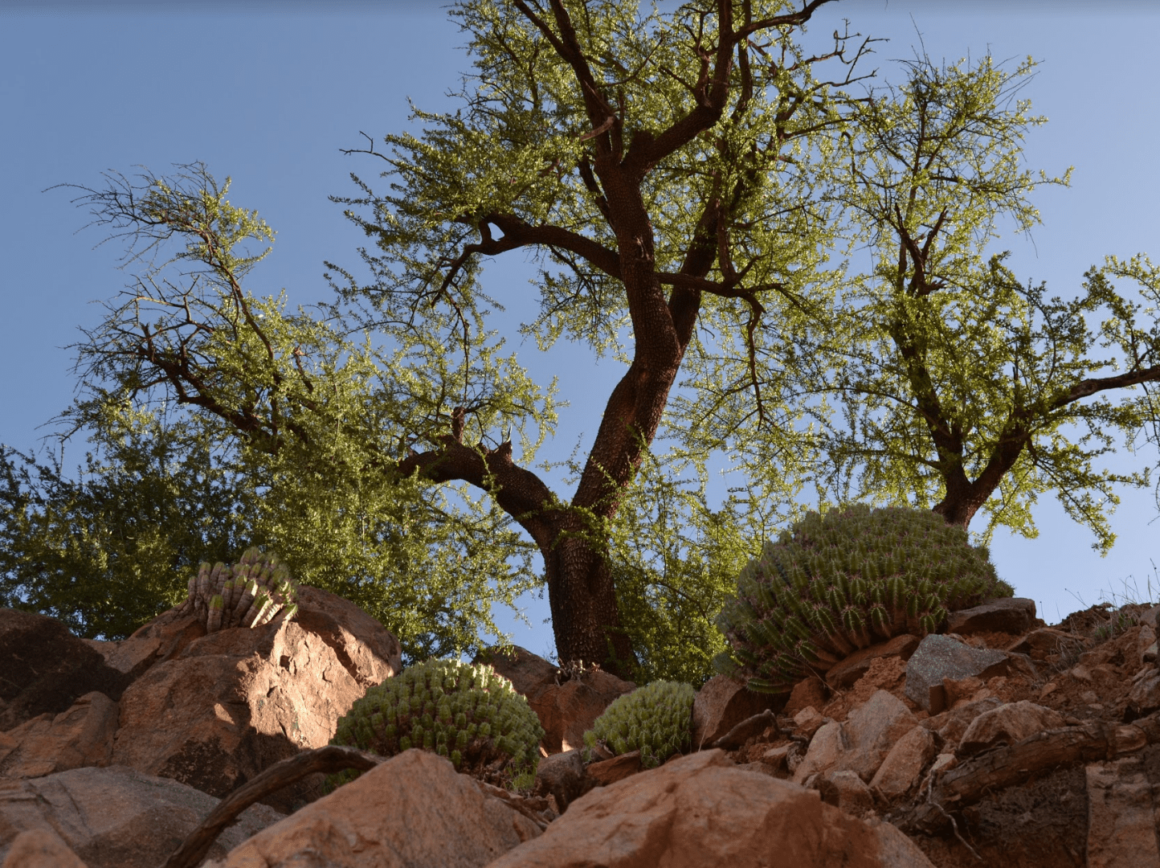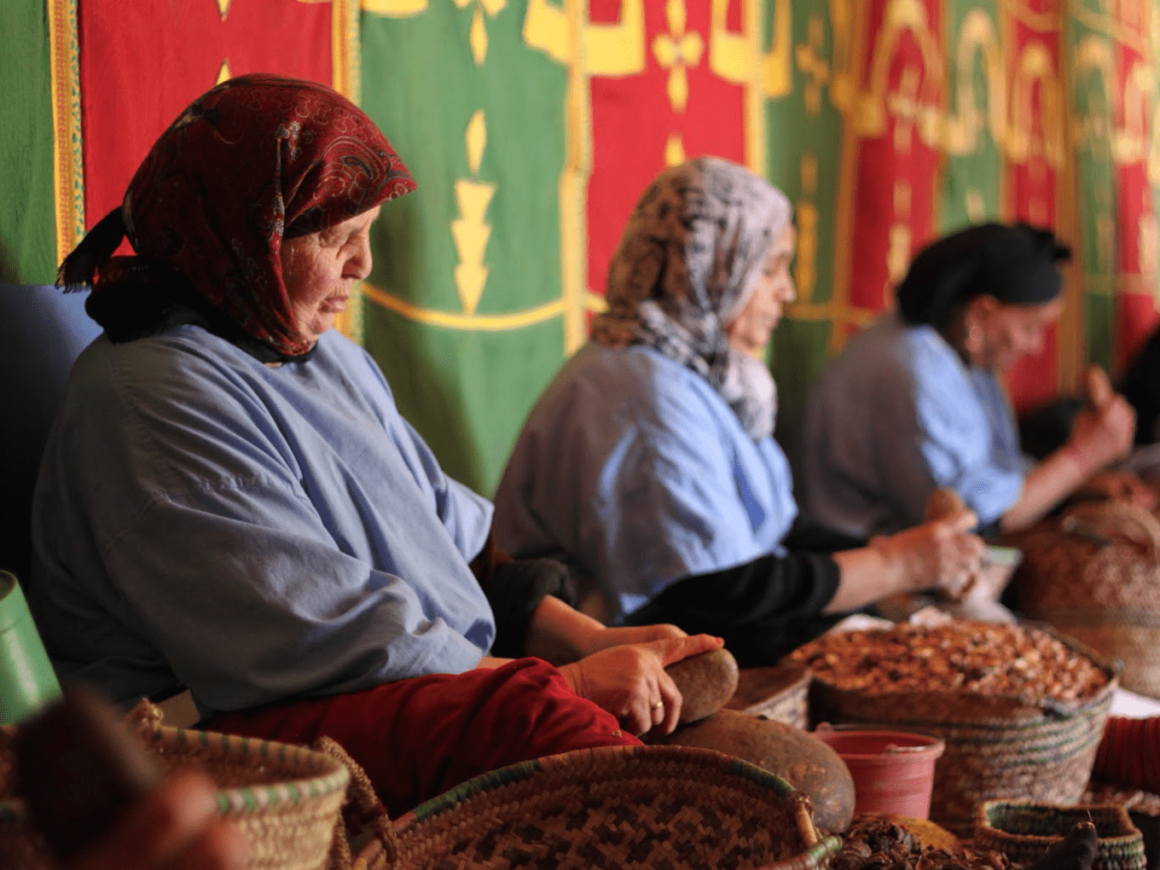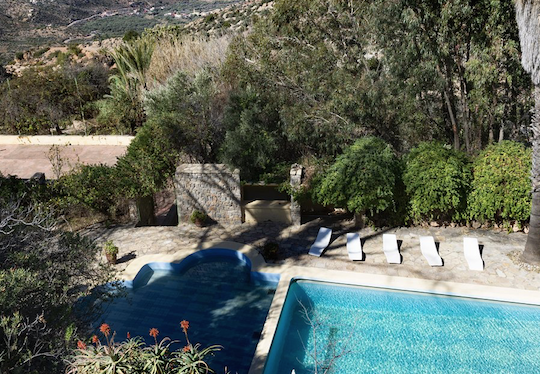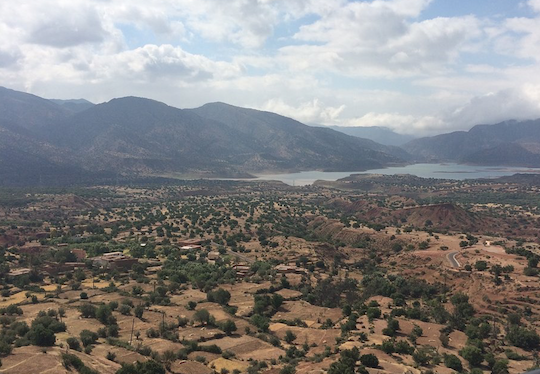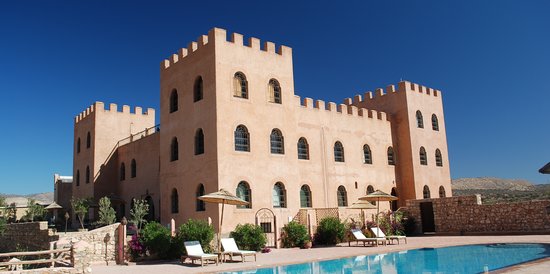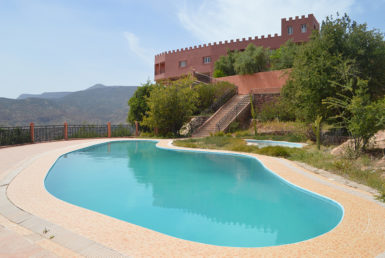The Arganeraie Biosphere Reserve – What is it?
Trip from Agadir: 30 minutes
On December 8, 1998, the Arganeraie was declared by UNESCO as Morocco’s first Biosphere Reserve covering an area of approximately 2.5 million hectares. It covers the provinces and prefectures of Agadir Ida Outanane, Inzeguane Aït Melloul, Chtouka Aït Baha, Taroudant, Tiznit and Essaouira. With 830,000 hectares and 21 million trees, the argan tree constitutes the second largest Moroccan forest resource after the holm oak.
The largest populations cover the southern slopes of the High Atlas and the northern slopes of the Anti-Atlas, that is to say a large part of the Souss basin, over a continental depth that can reach one hundred kilometers, and over altitudes ranging up to 1,500 meters.
The Argan tree is threatened with disappearance, because of various forms of aggression:
- In less than half a century, the average density of the argan grove has increased from 100 argan trees per hectare to 30.
- The area covered is declining by an average of 600 hectares per year mainly due to overgrazing.
First scattered on the side of the coastal hills, the argan trees form more dense forests as one advances towards the interior of the country. This natural heritage is vital for southwestern Morocco because heavy ecological consequences (desertification) could be felt if the argan groves start to disappear.
Indeed, this tree has very dense and deep roots which protect the soil from erosion because they are, on average, twenty times the size of the aerial part of the tree. The deeper primary roots allow trees to tap into water tables and the secondary roots to fight against water erosion.
A entire genetic legacy depends on the argan tree, whether animal, plant or microbial species.
The whole formed by this ecosystem constitutes a balance in which the argan tree plays a prevalent role. Knowing this, it is clear that the socio-economic activities of the populations present in this area are strongly linked to the Arganeraie (production of argan oil, local products and eco-tourism, ……).
The argan tree conditions the life of many rural communities in southwestern Morocco who have an intimate relationship with this tree. This relationship can even be qualified as organic and explains the agrarian system put into place. In fact, generations of peasants have always been able to benefit from the argan tree through several forms of exploitation:
- The argan tree is a fruit tree. Its kernel constitutes the providential element of the tree. This fruit is composed of a fleshy pulp and a very hard core enclosing the oilseed. It is from this kernel that the precious argan oil is extracted. The oil itself is a basic foodstuff and is widely used in cosmetic and medical products.
- The argan tree provides a hard, resistant wood that is used in construction and tool making, for heating, and is transformed into charcoal for cooking.
- Its leaves feed large herds mainly made up of goats.
The argan tree constitutes the fundamental pillar around which all the components of the system are articulated, including the structures and social practices that result from the different phases of its exploitation.
The Arganeraie owes its reputation not only to its trees but also to the agrarian civilization it has created; the result of a long process of adaptation.
These are the characteristics that have earned it the UNESCO World Heritage Label and justify the creation of the Arganeraie Biosphere Reserve (RBA).






